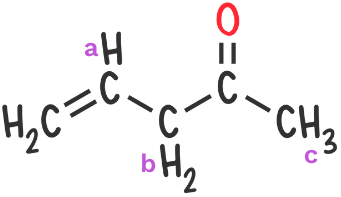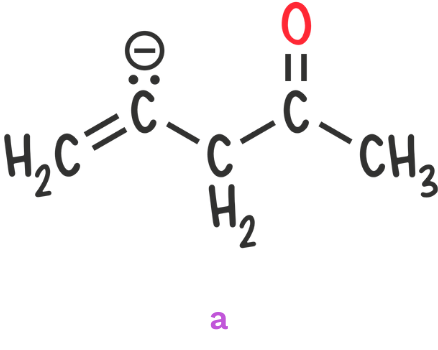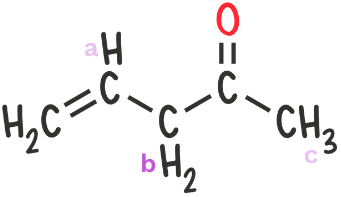Challenge 1
Question:
In the following molecule, which of the labeled protons is the most acidic?

Ready? Let’s go!
Step 1: Draw the corresponding conjugate base for each proton
To start, we’ll remove a proton (H⁺) from each labeled spot. When we do this, we form a conjugate base.
Why do we do this? Because the stability of the conjugate base tells us how acidic the proton was. A more stable conjugate base means a more acidic proton.
Let’s draw the conjugate base for each labeled proton.

Step 2: Evaluate and rank the stability of the conjugate bases
Now that we’ve got our conjugate bases, let’s analyze them. We’ll rank their stability using these five factors: Charge, Atom, Resonance, Induction, and Orbitals.
Charge
What is the charge on each conjugate base?
Each base carries a negative one (-1) charge.

💡 Conclusion: The charge factor doesn’t help us here since all the bases have the same charge.
Atom
Which atom is holding the negative charge?
For conjugate bases a, b, and c, the negative charge is on carbon.

💡 Conclusion: The atom factor doesn’t help us here either since the negative charge is on the same atom in all bases.
Resonance
Is the negative charge delocalized over multiple atoms?
Here’s where things get interesting! Resonance helps stabilize negative charges by spreading them over multiple atoms. Let’s analyze:
Conjugate base a
The negative charge is ‘stuck’ on the carbon atom—no resonance stabilization here.

Conjugate base b
The negative charge is spread out over two carbon atoms and one oxygen atom.

Conjugate base c
The negative charge is spread out over one carbon atom and one oxygen atom.

💡 Conclusion: Conjugate bases b and c are stabilized by resonance, while a is not. This makes a the least stable conjugate base and proton a the least acidic of the three protons.
🤔 So, between b and c, which is more stable?
Conjugate base b
The negative charge is spread out over three atoms (two carbon atoms and one oxygen atom).

Conjugate base c
The negative charge is spread out over two atoms (one carbon atom and one oxygen atom).

💡 Conclusion: Conjugate base b is more stable than c because its negative charge is spread out over more atoms.
Step 3: The more stable conjugate base corresponds with the more acidic proton
Since conjugate base b is the most stable conjugate base, proton b is the most acidic of the three highlighted protons.
